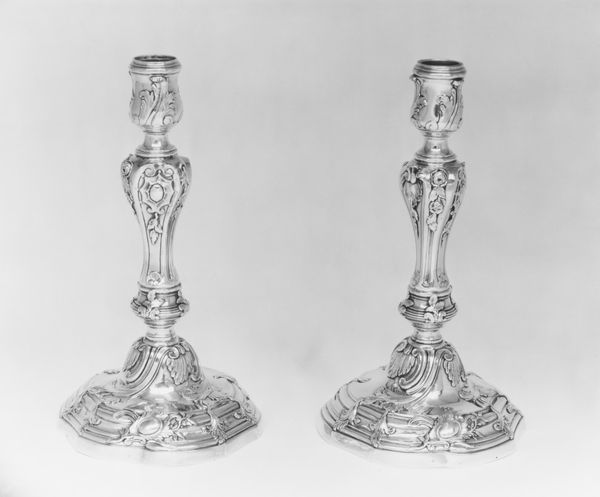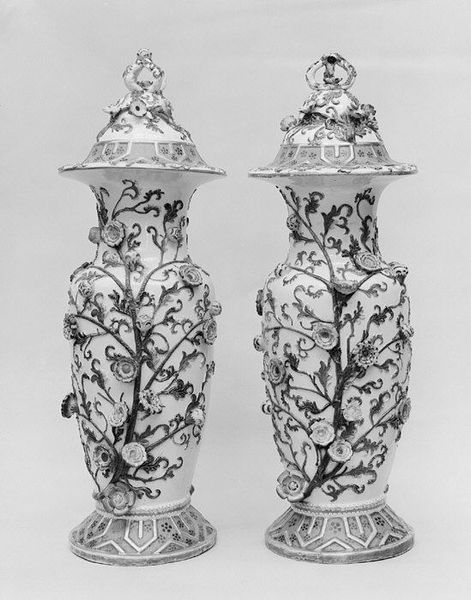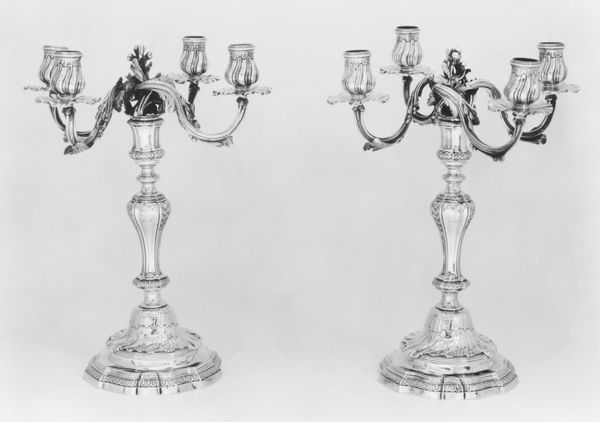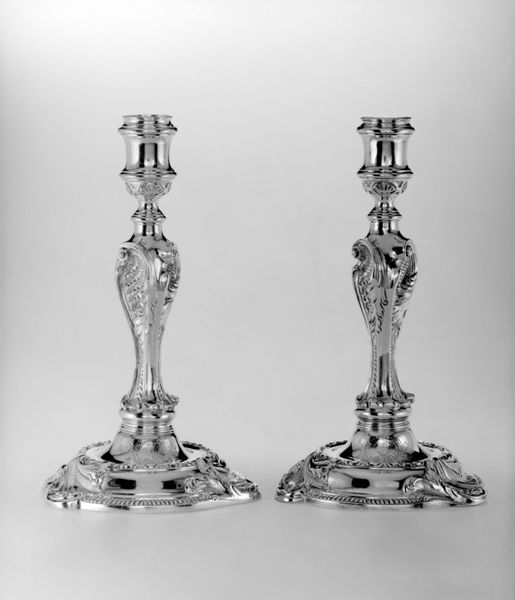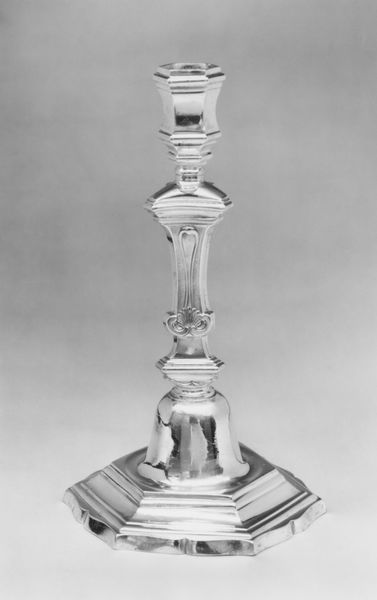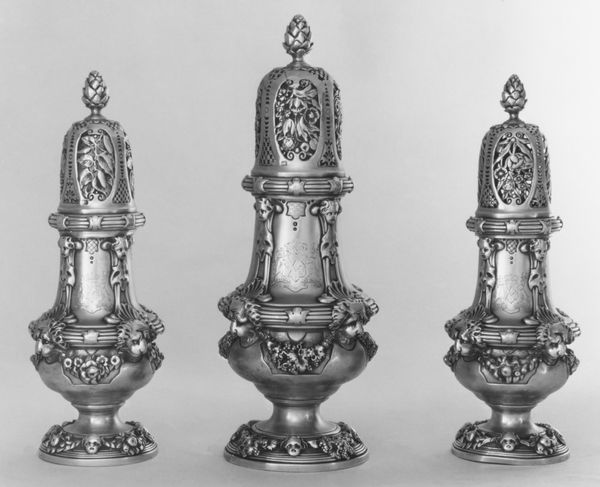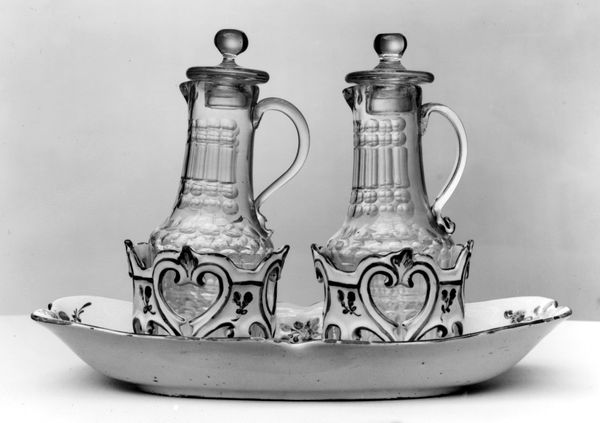
silver, metal, sculpture
#
silver
#
baroque
#
metal
#
sculpture
#
decorative-art
Dimensions: Overall (.41a–c): 8 × 6 3/4 × 4 1/8 in. (20.3 × 17.1 × 10.5 cm); Overall (.42a–c): 8 × 6 3/4 × 4 3/8 in. (20.3 × 17.1 × 11.1 cm)
Copyright: Public Domain
Paul de Lamerie crafted these cruets and their stands in the 18th century from silver and glass. The forms are decidedly extravagant, marked by intricate ornamentation. Notice how the reflective surfaces of the silver amplify the complex details, creating a dazzling visual effect. De Lamerie's design showcases the stylistic principles of the Rococo period. The symmetry in the pairing is offset by the fluid lines and asymmetrical patterns of the applied decoration. These elements destabilize the more rigid structures typical of earlier styles. The curvaceous forms and naturalistic motifs, like shells and foliage, evoke a sense of organic growth. This stands in contrast to the highly controlled craft of silversmithing. Consider how these cruets exemplify a cultural shift towards valuing ornate detail and dynamic form. This preference suggests a move away from classical restraint towards a celebration of opulence and sensory richness. These aren't merely functional objects, but elaborate displays of wealth and taste.
Comments
No comments
Be the first to comment and join the conversation on the ultimate creative platform.
